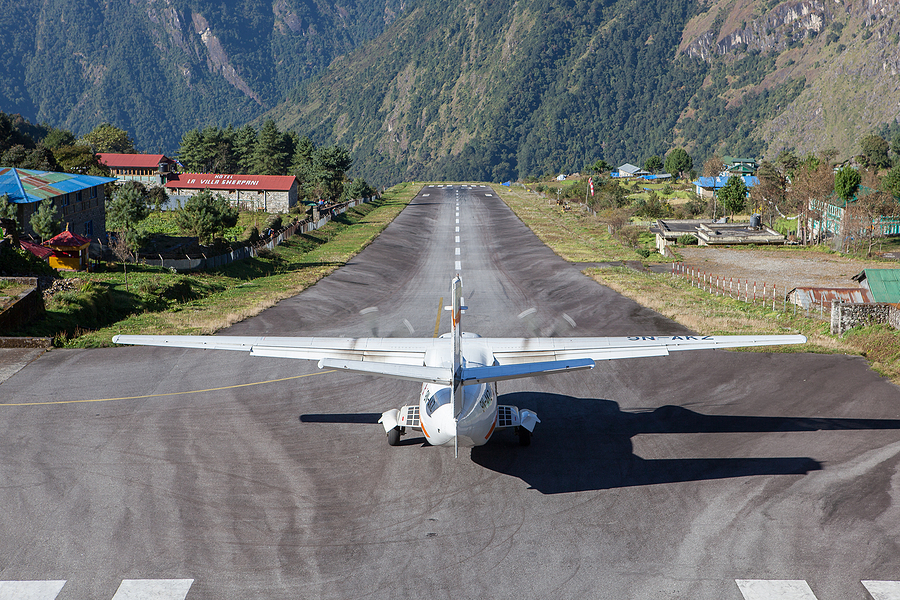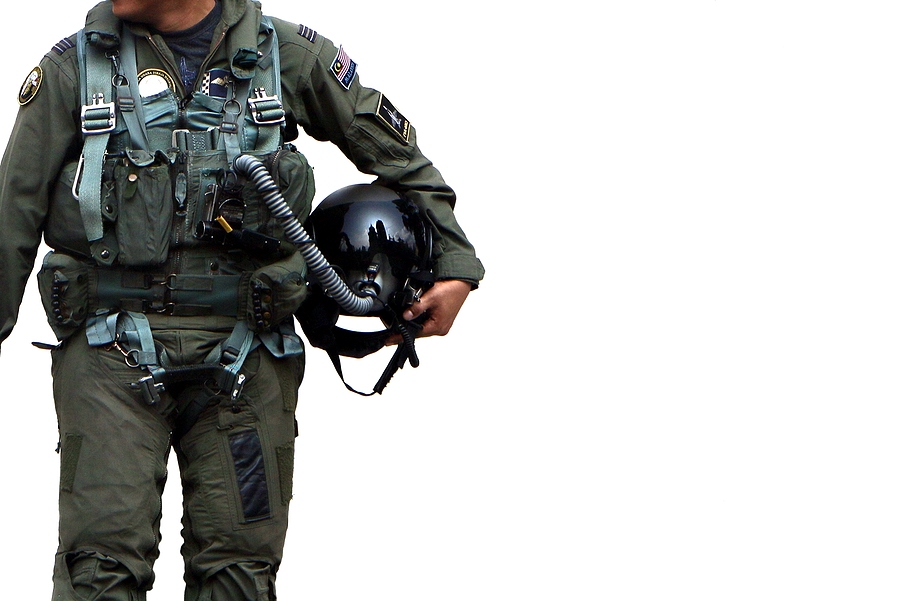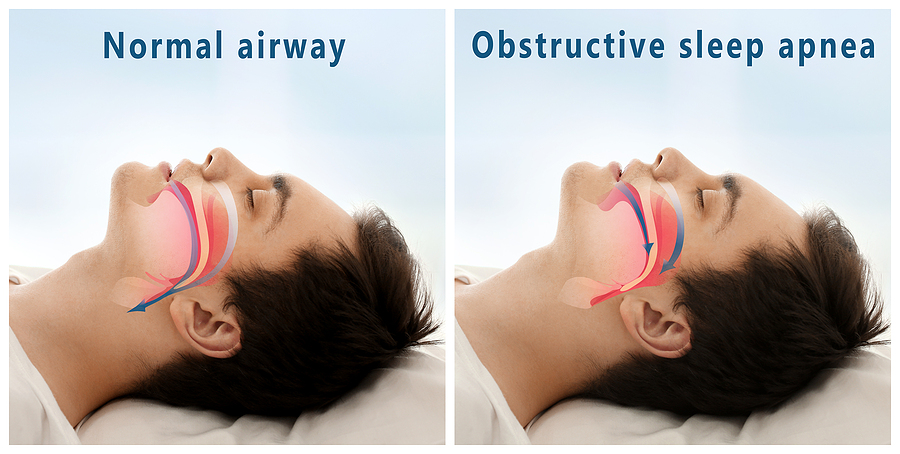Discussions about high altitude flying usually revolve around the use of oxygen and with good reason. Part 91 oxygen requirements apply as you climb above 12,500 feet MSL, while prudence based on your actual physiology may dictate oxygen use at much lower altitudes. Hypoxia can affect vision as low as 5000 feet while cognitive ability and physical dexterity can show decline around 10,000 feet. Hypoxia is the most certain and immediate physiologic danger as you climb in an unpressurized aircraft.
Most pilots who have flown in mountainous areas have probably encountered some combination of terrain and weather that brought the potential use of oxygen, or at least the associated regulatory requirements, to the forefront of their flight planning considerations.
Given the high altitude performance limitations of normally-aspirated engines and the small number of scenarios that actually require flying above 10,000 feet, many, if not most, piston aircraft operators choose to forego the expense and complication of using supplemental oxygen systems. After all, the scenery is usually more interesting at lower altitudes anyway.
High Altitude Unpressurized Flights
But what if you do go higher? Once you don an oxygen mask, very few regulatory limits apply. Some Pilot Operating Handbooks (POH) specify a service ceiling, but many contain no altitude limitation. Unless your unpressurized piston airplane happens to be RSVM compliant, staying below 28,000 may be the only restriction you need to observe.
However, similar to the FAA’s rules on oxygen use, just because you’re allowed to go there, doesn’t mean you should. As it turns out, like SCUBA divers who surface too quickly, pilots and passengers who fly in unpressurized airplanes are at some risk for developing decompression sickness. This was first observed in balloon flights during the early 1900s and remains a significant consideration for ultra-high flyers like U-2 pilots and astronauts [1], but it is seldom discussed in general aviation.
Decompression Sickness in Diving
When most people consider Decompression Sickness (DCS) and airplanes, it is often in the context of determining how long after a SCUBA dive they can safely fly. For dives that do not require decompression stops, the Divers Alert Network recommends waiting 12 hours to fly after a single dive and 18 hours after multiple dives or diving on consecutive days. For dives that do require decompression stops, they recommend waiting 24 hours or more [2]. Other agencies have slightly different recommendations, but they are all based on the same principles. The longer you breathe air in a high pressure environment, the more nitrogen dissolves in your tissues. The faster and more dramatically you reduce the pressure, the more likely it is that bubbles will form as the nitrogen escapes.
Carbonated beverage containers provide the most intuitive illustration of this concept. When you take a sealed soda bottle out of the refrigerator, no bubbles are visible. That changes the second you twist off the top. If you open it slowly, you might hear a soft hiss as a few small bubbles of carbon dioxide form and the pressure slowly equalizes with the ambient air. Open the top more quickly, and you will hear a louder “pop” as more and larger bubbles form while the pressure equalizes explosively.
The same thing happens with SCUBA divers and aviators, except that the bubbles are formed by excess nitrogen and – rather than spilling over the top of a soda bottle – they have a tendency to get lodged in inconvenient places like joints, blood vessels, lungs, and spinal columns.
Aviation Decompression Sickness
SCUBA divers experience DCS far more often than aviators. That is because the pressure fluctuations they experience happen much faster and more dramatically. By comparison, the pressure change you would experience between the vacuum of space and standing by the beach at sea level happens every 33 feet underwater. That means that a SCUBA diver who descends 60 feet underwater experiences almost three times the ambient pressure as someone at the surface above. It is easy to conceptualize that surfacing from that depth could cause dissolved gas to form bubbles along the way.
Aviators need to fly much higher than 33 feet to experience a similar pressure change. Atmospheric pressure does not become zero until you reach the Kármán line about 62 miles above the Earth’s surface. However, about half of that pressure change happens between sea level and 18,000 feet MSL. As you reach that altitude, the pressure becomes low enough that nitrogen dissolved in your blood on the ground starts to form bubbles inside your body.
One study observed that gas bubbles may start forming in your bloodstream as low as 15,000 and are present more than 50% of the time as you climb above 21,000 [3]. 5% of those same study participants showed actual symptoms of DCS at just over 21,000 feet, as did more than half when the altitude was increased above 22,500 feet. Another study showed similar results with a significant portion of study participants showing symptoms of DCS starting at 21,000 feet [4].
Managing High Altitude Risk
While the number of pilots flying unpressurized airplanes in the flight levels represents a tiny minority of aircraft operators, the numbers are high enough to make DCS a worthwhile topic of discussion. Almost anyone with a turbocharged or turbonormalized aircraft can get to the flight levels.
While aviation DCS has only claimed one life in more than 60 years [5], with non-fatal symptoms that range from joint pain, to breathing difficulty, and even temporary paralysis, it is a hazard that should be taken seriously.
One of the most important things to understand about preventing aviation DCS is that without significantly specialized equipment and a full pre-breathing process, breathing oxygen in flight has almost no effect on preventing it. Nitrogen bubbles will start to form no matter what you breathe. Oxygen helps prevent hypoxia, not DCS. The altitude you choose and the time you spend there are the only two variables you can really control.
In order to limit the potential for DCS symptoms, we recommend that you never operate an unpressurized aircraft above 18,000 feet MSL regardless of airplane performance capability or oxygen equipment. If you choose to fly higher than that, make sure you have the proper oxygen equipment to reduce the risk of hypoxia and limit your time above 18,000 feet to the shortest amount of time required by your mission.
References
[1] J. R. Davis, Ed., Fundamentals of aerospace medicine, 4th ed. Philadelphia: Lippincott Williams & Wilkins, 2008.
[2] “Guidelines for Flying After Diving,” Divers Alert Network. Accessed: Jan. 15, 2024. [Online]. Available: https://dan.org/health-medicine/health-resource/health-safety-guidelines/guidelines-for-flying-after-diving/
[3] J. T. Webb, A. A. Pilmanis, and R. B. O’Connor, “An abrupt zero-preoxygenation altitude threshold for decompression sickness symptoms,” Aviat. Space Environ. Med., vol. 69, no. 4, pp. 335–340, Apr. 1998.
[4] T. L. Haske and A. A. Pilmanis, “Decompression sickness latency as a function of altitude to 25,000 feet,” Aviat. Space Environ. Med., vol. 73, no. 11, pp. 1059–1062, Nov. 2002.
[5] J. C. Neubauer, J. P. Dixon, and C. M. Herndon, “Fatal pulmonary decompression sickness: a case report,” Aviat. Space Environ. Med., vol. 59, no. 12, pp. 1181–1184, Dec. 1988.





